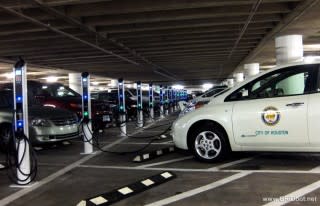Jobs Are Getting Further From People; That Means More Driving
For the first time since the postwar suburban boom started 65 years ago, it appears U.S. residents may be starting to drive less.
Analysts have noted a stagnation in annual vehicle-miles traveled, and a mix of changing behavior patterns and environmental concerns have led to rising use of alternative forms of transportation.
SEE ALSO: Growth In Mass-Transit Usage Outpaces Increase In Miles Driven In U.S. (Mar 2014)
Renewed interest in mass transit and new alternatives to car ownership like car sharing and ride sharing seem to point to decreased use of cars in urban areas.
Yet a new study claims that when Americans do drive to work, they are traveling farther than they used to.

Between 2000 and 2012, the number of jobs within typical commuting distance of major U.S. metropolitan areas dropped 7 percent, researchers with the Brookings Institute found.
The study The growing distance between people and jobs in metropolitan America (PDF), looked at the 96 largest metro areas--encompassing both cities and surrounding suburbs--in the country.
The number of jobs within typical commuting distance declined in all but 29 of those cities during the period studied.
DON'T MISS: Car Sharing Awareness Grows: 1 In 5 Americans Has Used It Now (Oct 2014)
"Typical commute distance" was defined in this case as the median commuting distance shown by census-tract data in a given area, as the crow flies.
The typical distance varied from 4.7 miles for Stockton, California, to 12.8 miles for Atlanta.
The trend was more severe in suburbs, which added more jobs but are less densely settled than inner-city areas.

As a result, while the number of jobs rose by 4 percent in suburbs and dropped by 2 percent in inner-city areas, job proximity decreased by around 7 percent for suburban residents, compared to 3 percent for inner-city residents.
Poor and minority residents were more severely affected, with the number of nearby jobs declining much more steeply for poor than non-poor workers, and for black and Hispanic workers than whites.
So, ironically, lower-income individuals who will likely have a tougher time affording cars are the ones who may to really on them the most, to reach jobs well outside the public-transit infrastructure of urban cores.
CHECK OUT: Car Ownership Rates Plunge In European Cities; Smartphones More Important (Sep 2014)
It's all a problem for those looking to cut air pollution and oil consumption by decreasing reliance on cars.
There may be a willingness by policymakers and at least some of the driving public to curtail car use, but the existing suburban infrastructure will likely keep them in most people's lives for the time being.
_______________________________________________

 Yahoo Finance
Yahoo Finance 
